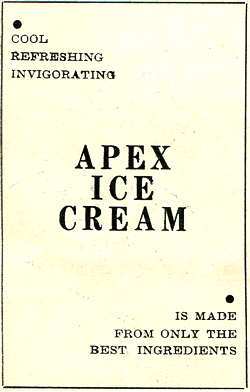In 1944, as the war advanced in Europe, a New Zealand
Patriotic Fund ice cream plant was set up in Italy.
And in November 1944, Tip Top ice cream mix was supplied to the Tui
Club, a beach rest and recreation centre on Guadalcanal in the
Solomon Islands, where an ice cream plant had been installed for the
use of RNZAF (air force) servicemen on leave from the fighting.
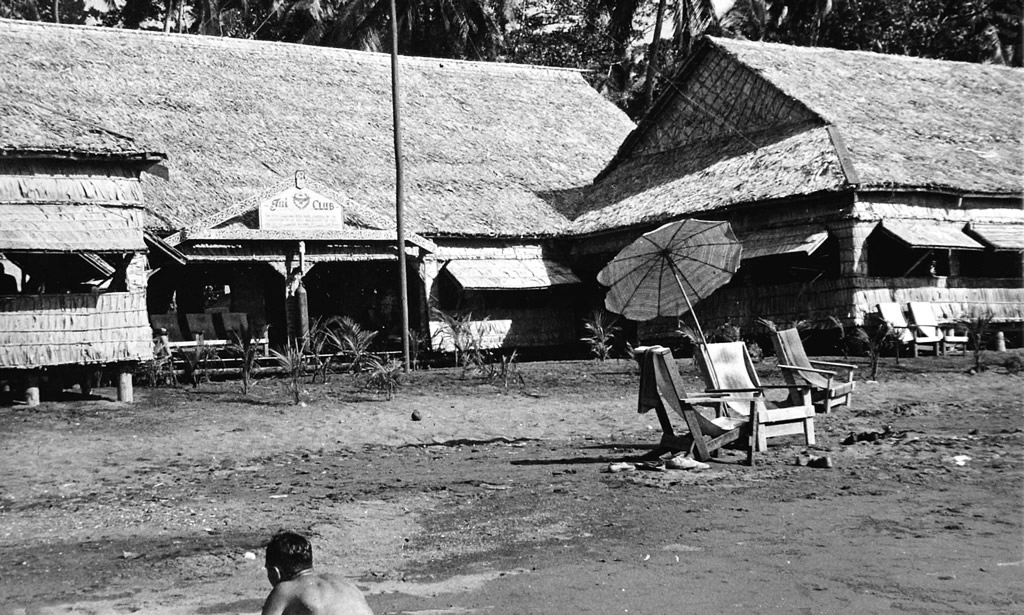
Tui Club, Guadalcanal
- Arthur Manz Collection, via Jenny Scott.
1945 - A pint (600ml) carton of ice cream sold for
1/4 ½ (one shilling, fourpence ha'penny), and a quart for
2/9.
Regulating & Controlling the Industry
1945 - On the recommendation of the Wellington Medical
Officer of Health, the Petone Borough Council resolved to ask all
municipal bodies to prohibit the sale of ice cream in cinemas throughout
the country. The problem was that ice creams in cones were being
scooped and handled by cinema staff at the same time as they handled
packaged items, confectionery, money, etc..
The debate over hygiene standards covering the sale of un-packaged ice
cream in cinemas and "composite shops" continued for several
years, highlighting different approaches by central authorities (the
Health Dept.), and local body health inspectors.
The NZICMA argued that such sales should be permitted provided there
were hygienic conditions at the point of sale and adequate facilities
for
washing hands.
1946 - The Food and Drug Regulations 1946 was
published, with definitions for Ice Cream, Milk Ices / Milk Blocks,
and Ices.
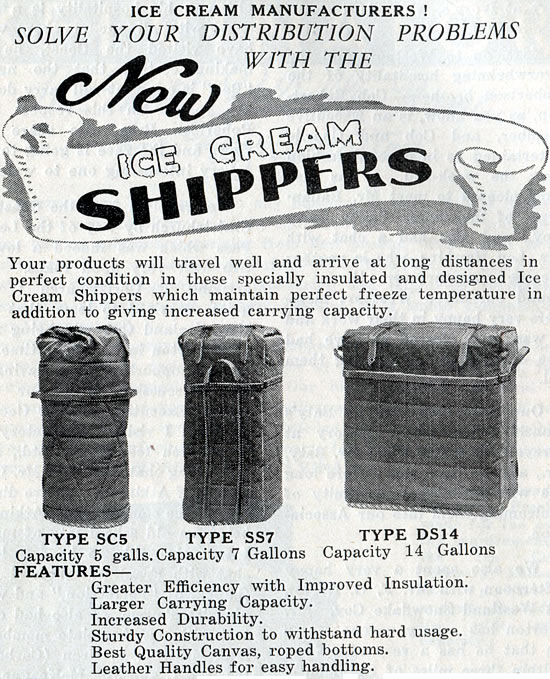
Ice cream shippers, advertised by A.C. Taylor & Co. Ltd.,
Christchurch, 1947.
- The Frostee Digest, NZICA archives.
1947 - Apex Ice Cream set up an 80-quart Vogt ice
cream churn on their stand at the New Zealand Industries Fair held
in Christchurch, and wowed the crowds by producing ice cream for
four hours a day, filling sixpenny cartons at the rate of 1800/hr.
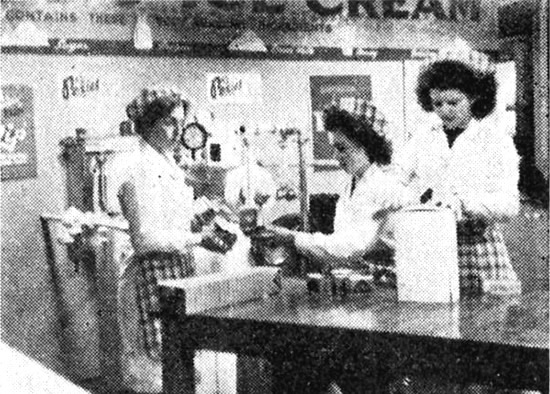
Apex Ice Cream, NZ Industries Fair, Christchurch, 1947.
- Frostee Digest.
1948 - Sugar rationing ended.
After the war, manufacturers were torn - they wanted to maintain the
quality of ice cream but there were concerns that, if the standard was
raised to 10% milk fat again, the Government's price control system would
not allow them to recover the true costs of the additional 2% butterfat.
Much of the 1950s was taken up with negotiating various issues under
the proposed new Food and Drug Regulations and it wasn't
until 1961 that the minimum fat content was increased back to 10%.
New Zealand's iconic Joy Bar was invented in 1948 by
the clever people at the Perfection Ice Cream Company,
Christchurch.
 Read
the Joy Bar story here ... Read
the Joy Bar story here ...
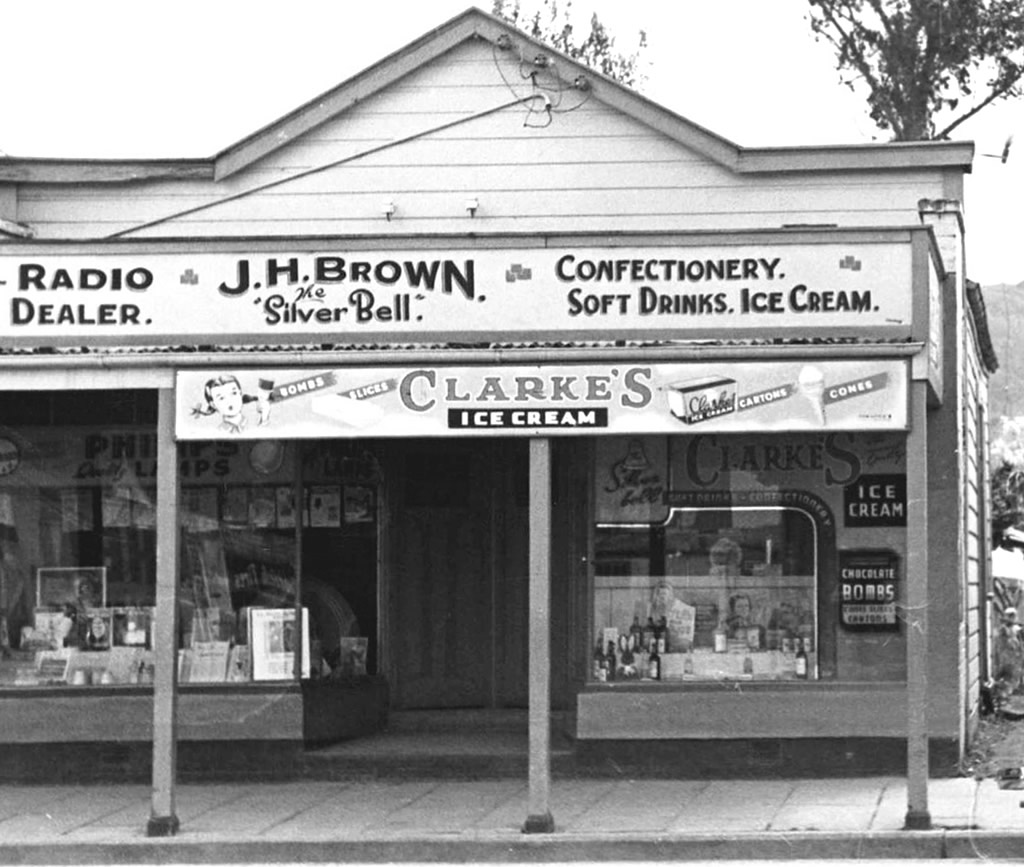
J. H. Brown 'The Silver Bell' - Music & Radio Dealer & Confectionery,
advertising Clarke's Ice Cream,"Bombs", "Slices", "Cartons", "Cones".
Main St, Upper Hutt, January 1948. Photographer: Leo Morel.
- Upper Hutt City Library Heritage Collections. Ref.
P2-164-276.
November 1948 - For the first time, Massey
Agricultural College included a section on ice cream manufacture
in its ten day Market Milk technical course.
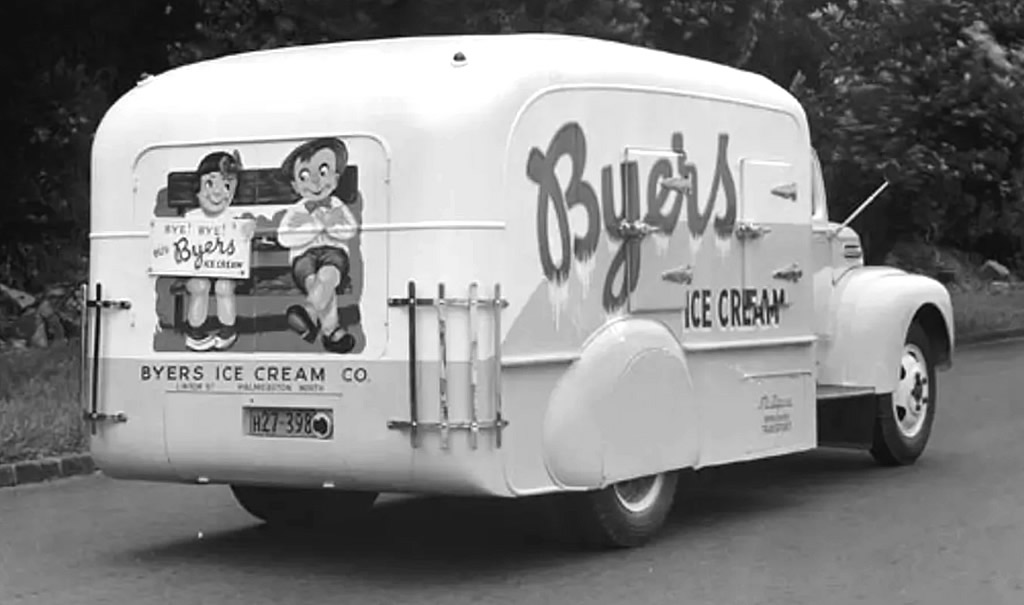
"Bye Bye Byers!". Byers Ice Cream refrigerated delivery
truck (Ford), 1948. Byers Ice Cream Co., Linton St, Palmerston North.
Refrigeration by McAlpine. Sparrow Industrial Pictures Ltd.
- Auckland War Memorial Museum neg.
4350B.
1949 - Ice cream was added to the NZ consumers price
index (CPI) basket of goods and services. A 'slice' of ice cream
was priced around 3 pence (85 cents in today's terms).
Frozen Products Limited, Wellington applied for a Trade Mark for the
term "Ripple Ice Cream".
1949 - Tip Top (Wellington)'s Len Malaghan was
behind the company's first refrigerated trucking operation which
became Refrigerated Freight Lines Ltd.
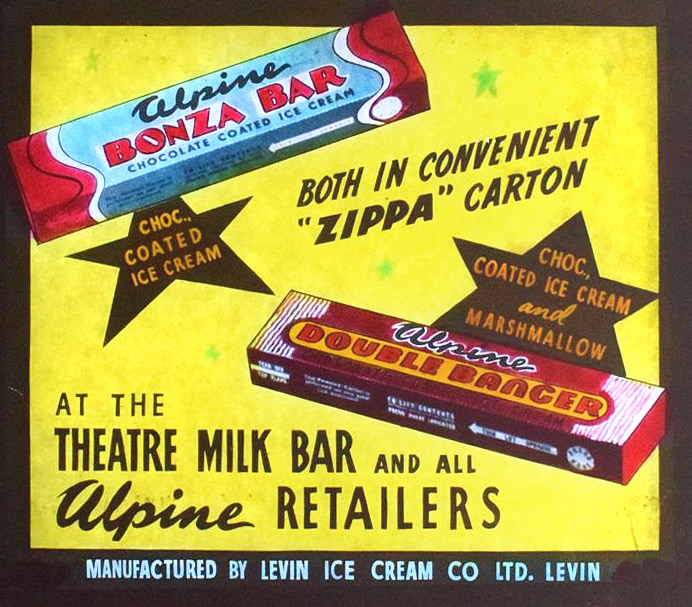
Alpine Ice Cream branded novelty bars, made under licence by
Levin Ice Cream Company, Levin
- Cinema Advertising Slide, ca. 1950.
- Kete
Horowhenua.
 1951
- 1960 1951
- 1960
 1931
- 1940 1931
- 1940
Sources, references and related sites:
Kete Horowhenua.
Mudcakes & Roses, April 2008 issue, Tasman District Council
NZ Ice Cream Assn. archives.
Papers Past (National Library of New Zealand digitised newspapers database):
http://paperspast.natlib.govt.nz/
Te Ara - the Encyclopedia of New Zealand
Upper Hutt City Library Heritage Collections.
 Back to
The History of Ice Cream in New Zealand Back to
The History of Ice Cream in New Zealand |
